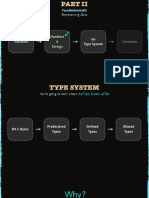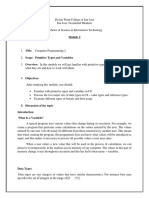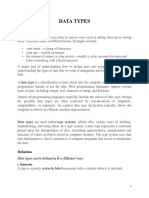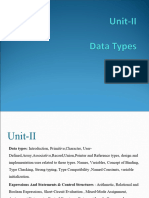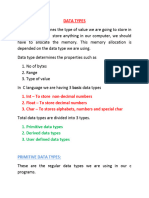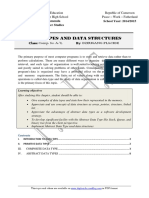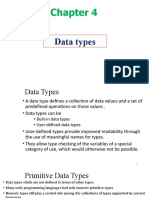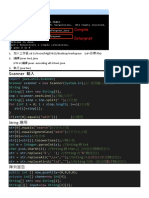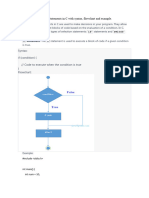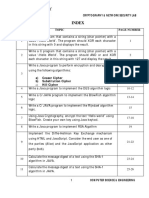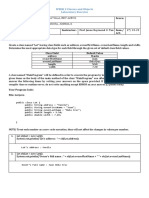GO - DATA TYPES
http://www.tutorialspoint.com/go/go_data_types.htm Copyright © tutorialspoint.com
In the Go programming language, data types refer to an extensive system used for declaring
variables or functions of different types. The type of a variable determines how much space it
occupies in storage and how the bit pattern stored is interpreted.
The types in Go can be classified as follows:
S.N. Types and Description
1 Boolean Types
They are boolean types and consists of the two predefined constants: a true b false
2 Numeric Types
They are again arithmetic types and they represents a) integer types or b) floating point
values throughout the program.
3 string types:
A string type represents the set of string values. Its value is a sequence of bytes. Strings
are immutable types that is once created, it is not possible to change the contents of a
string. The predeclared string type is string.
4 Derived types:
They include a Pointer types, b Array types, c Structure types, d Union types and e Function
types f) Slice types g) Function types h) Interface types i) Map types j) Channel Types
The array types and structure types are referred to collectively as the aggregate types. The type of
a function specifies the set of all functions with the same parameter and result types. We will see
basic types in the following section, whereas, other types will be covered in the upcoming
chapters.
Integer Types
The predefine architecture-independent integer types are:
S.N. Types and Description
1 uint8
Unsigned 8-bit integers 0to255
2 uint16
Unsigned 16-bit integers 0to65535
3 uint32
Unsigned 32-bit integers 0to4294967295
4 uint64
Unsigned 64-bit integers 0to18446744073709551615
5 int8
Signed 8-bit integers −128to127
6 int16
Signed 16-bit integers −32768to32767
7 int32
Signed 32-bit integers −2147483648to2147483647
8 int64
� Signed 64-bit integers −9223372036854775808to9223372036854775807
Floating Types
The predefine architecture-independent float types are:
S.N. Types and Description
1 float32
IEEE-754 32-bit floating-point numbers
2 float64
IEEE-754 64-bit floating-point numbers
3 complex64
Complex numbers with float32 real and imaginary parts
4 complex128
Complex numbers with float64 real and imaginary parts
The value of an n-bit integer is n bits and is represented using two's complement arithmetic
operations.
Other Numeric Types
There is also a set of numeric types with implementation-specific sizes:
S.N. Types and Description
1 byte
same as uint8
2 rune
same as int32
3 uint
32 or 64 bits
4 int
same size as uint
5 uintptr
an unsigned integer to store the uninterpreted bits of a pointer value
Loading [MathJax]/jax/output/HTML-CSS/fonts/TeX/fontdata.js
